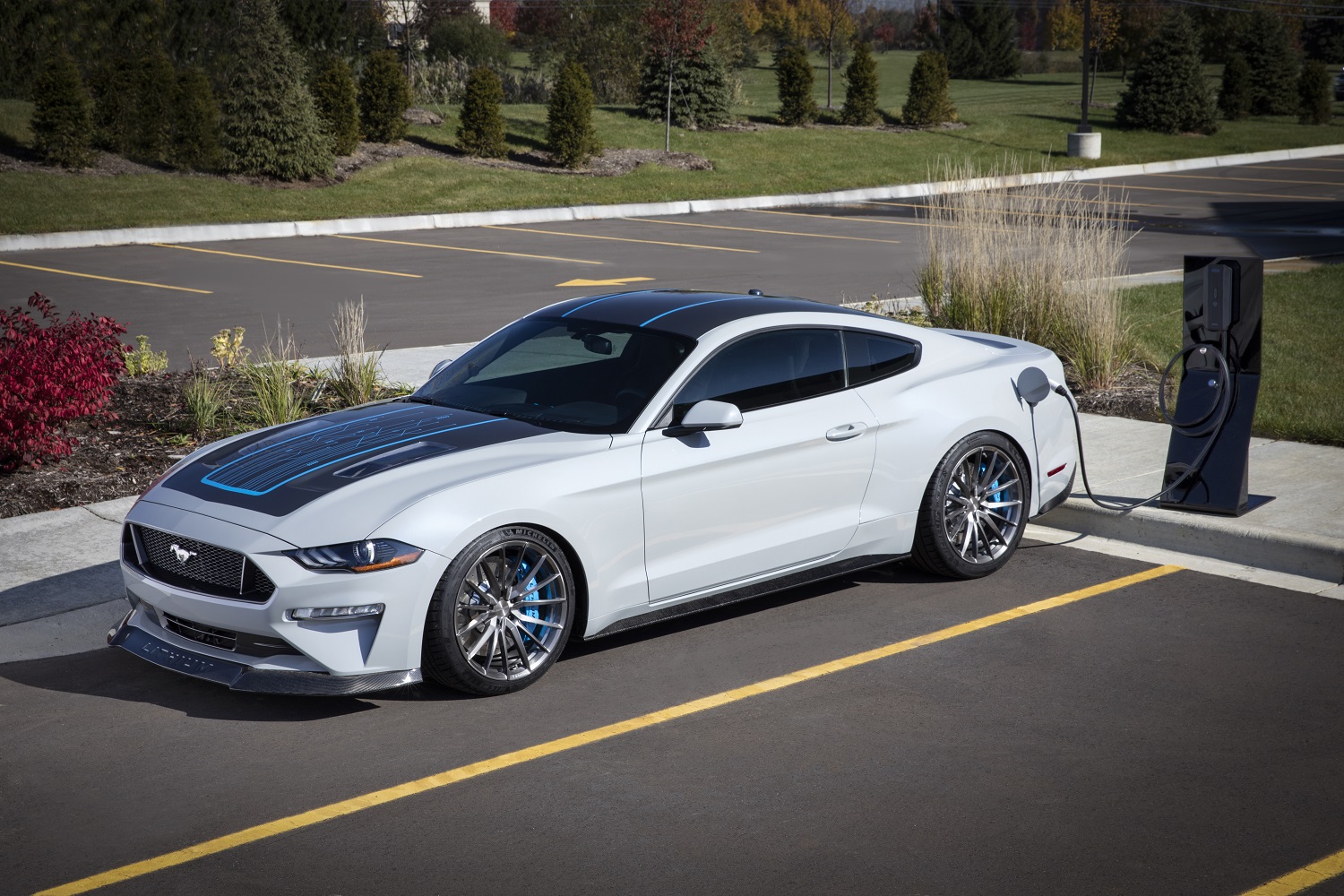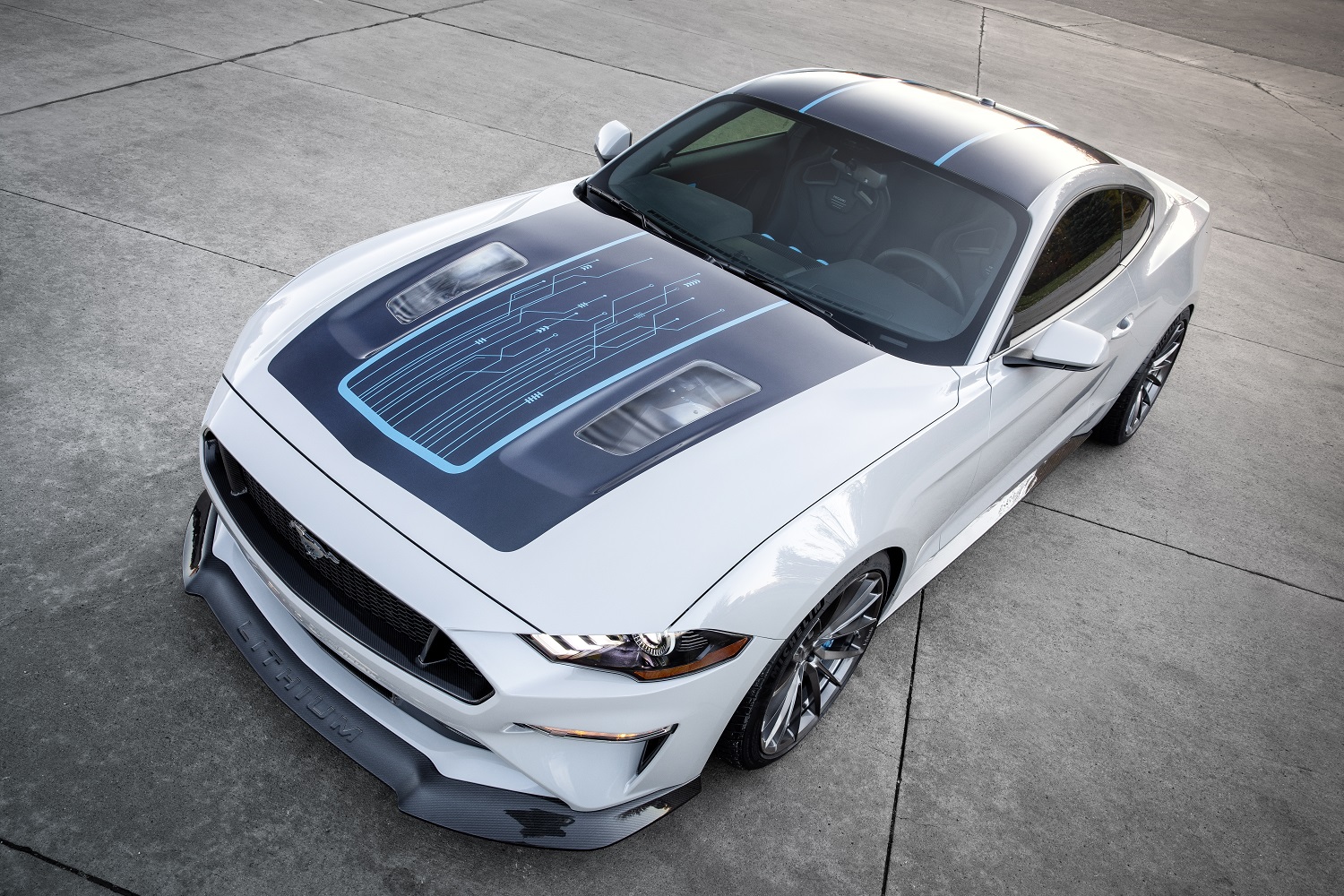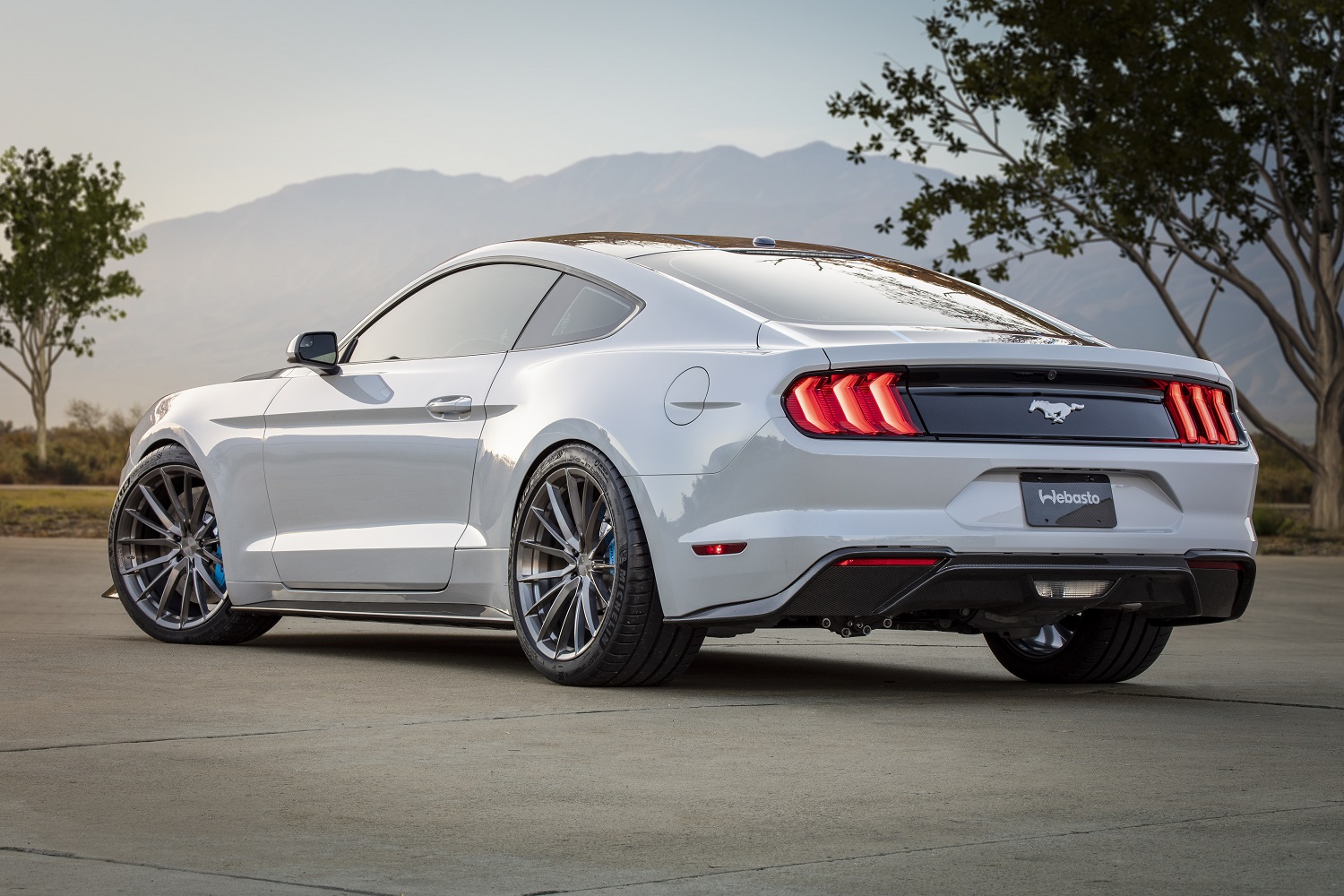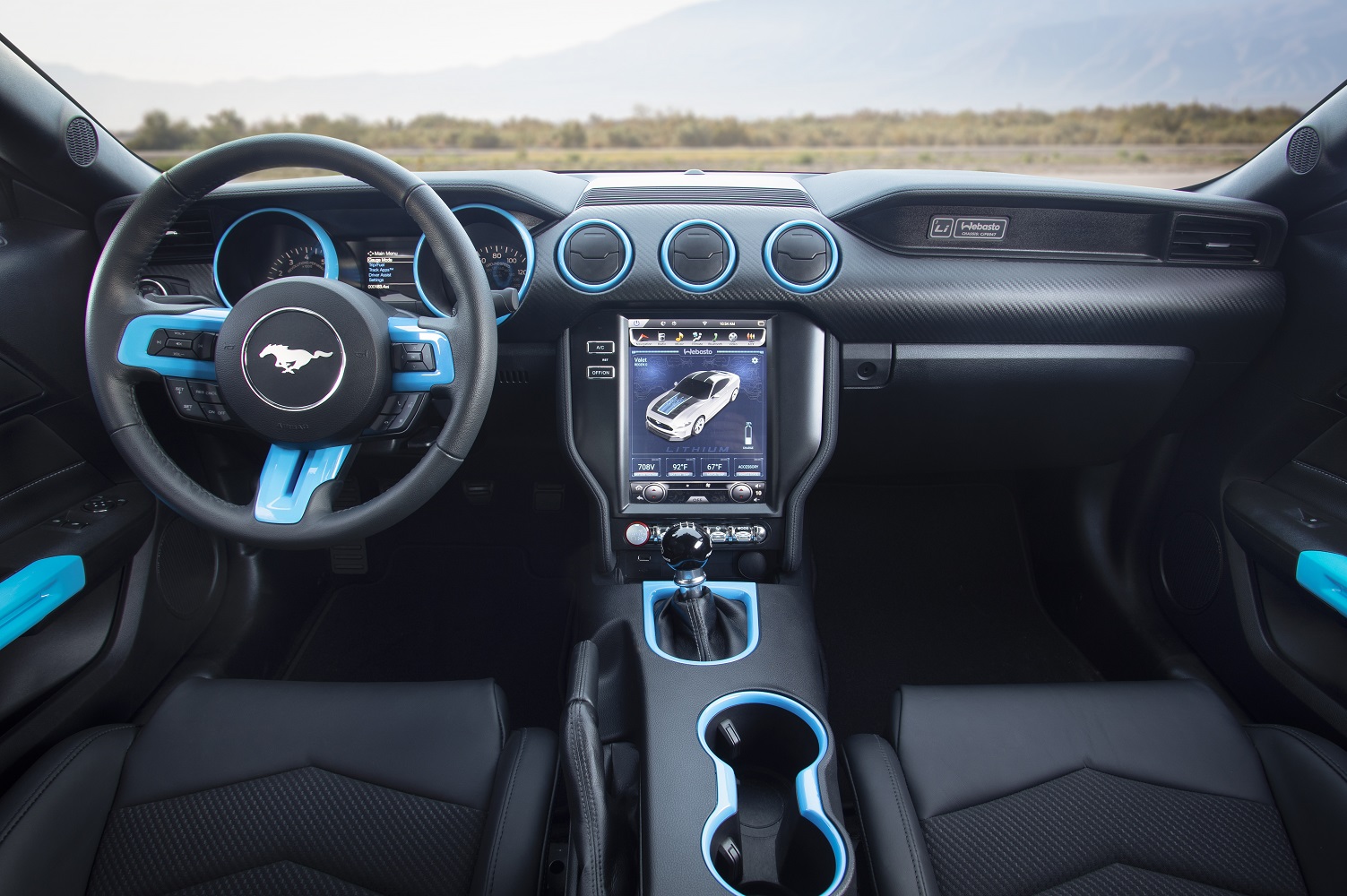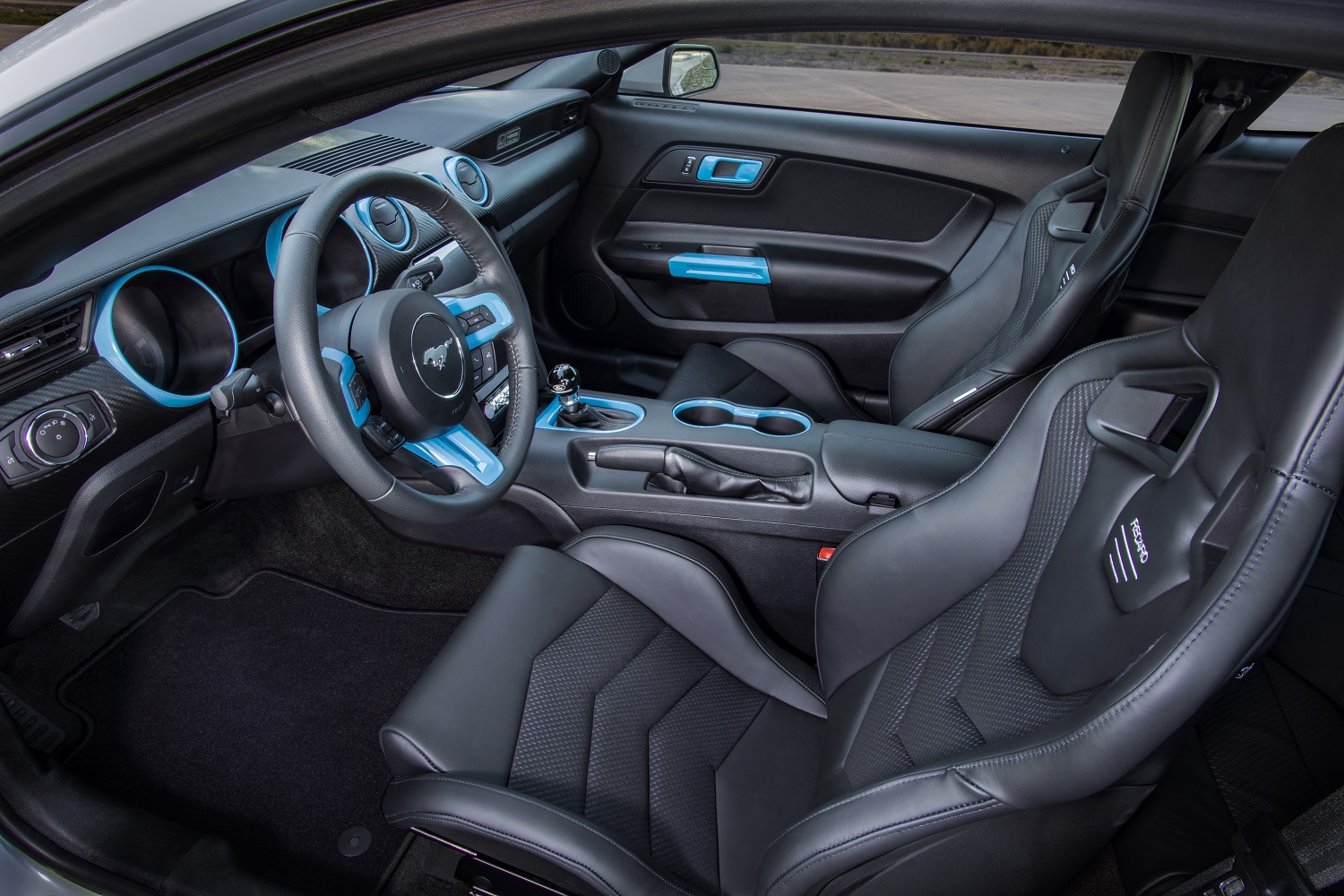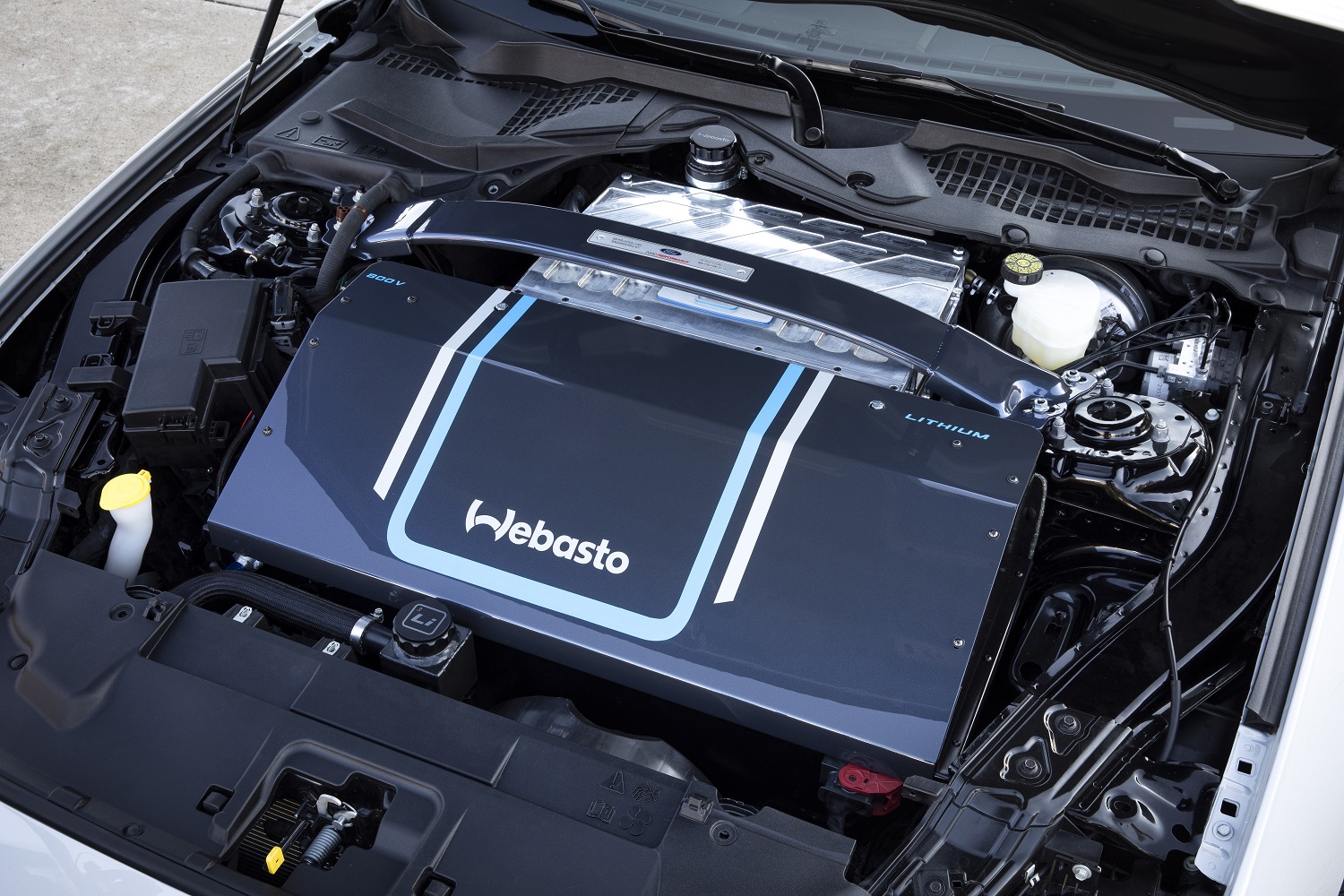Ford will begin building an electric crossover infused with Mustang genes in 2020. Mustang-inspired is not the same thing as Mustang-based, so the Blue Oval traveled to the 2019 SEMA show to illustrate what it’s capable of in the field of electrified performance. The Lithium concept promises to send eco-conscious enthusiasts to EV nirvana.
Masquerading as a lightly tuned 2020 Mustang, the Lithium was developed jointly by Ford and Webasto — a company more commonly associated with sunroofs than batteries — to explore how to electrify one of America’s favorite cars. The current generation of the car wasn’t designed with electrification in mind, but the power electronics fit neatly in an engine bay large enough to swallow a 5.0-liter V8. Carbon fiber body panels help offset the weight added by the battery pack.
Technical specifications remain a little bit murky, but Ford floated two jaw-dropping numbers: 900, and 1,000. The first is the Lithium’s horsepower, while the second corresponds to its torque output. To add context, this concept packs more power than a Mercedes-AMG E63 and a Volkswagen Golf R combined, and as much torque as Ram’s Heavy Duty trucks. An 800-volt electrical system not unlike the one fitted to the Porsche Taycan cuts down on the time it takes to charge the battery pack.
Making a quick electric car is easy; getting one to handle like a true sports car is much more difficult. To that end, Ford and Webasto made suspension tweaks to ensure the Lithium delivers the same type of driver engagement as a Mustang GT.
Look inside, and you’ll see something unusual for an electric car: a stick-shift. Every electric car sold new in 2019 has two pedals, but the Lithium concept argues there is a demand for a battery-powered sports car that blends zero-emissions driving with the engagement of a manual transmission. It’s a six-speed unit with a short-throw shifter.
The rest of the cabin is nearly stock, though the Mustang gained a massive 14-inch touchscreen that displays an electric car-specific infotainment system during the transformation. Here again, carbon fiber parts (including the dashboard) help keep weight in check, while further setting the Lithium apart from a regular, showroom-spec Mustang.
While Ford stressed the Lithium is a one-off model, it also clearly stated it’s not afraid to include its most popular nameplates in its looming electrification offensive. The F-150 will gain a hybrid option in 2020, and the Blue Oval is developing an electric variant of its hot-selling truck that it will sell alongside its gasoline- and diesel-powered models. We wouldn’t be surprised to see a Mustang plugged into a charging station by the middle of the 2020s.
